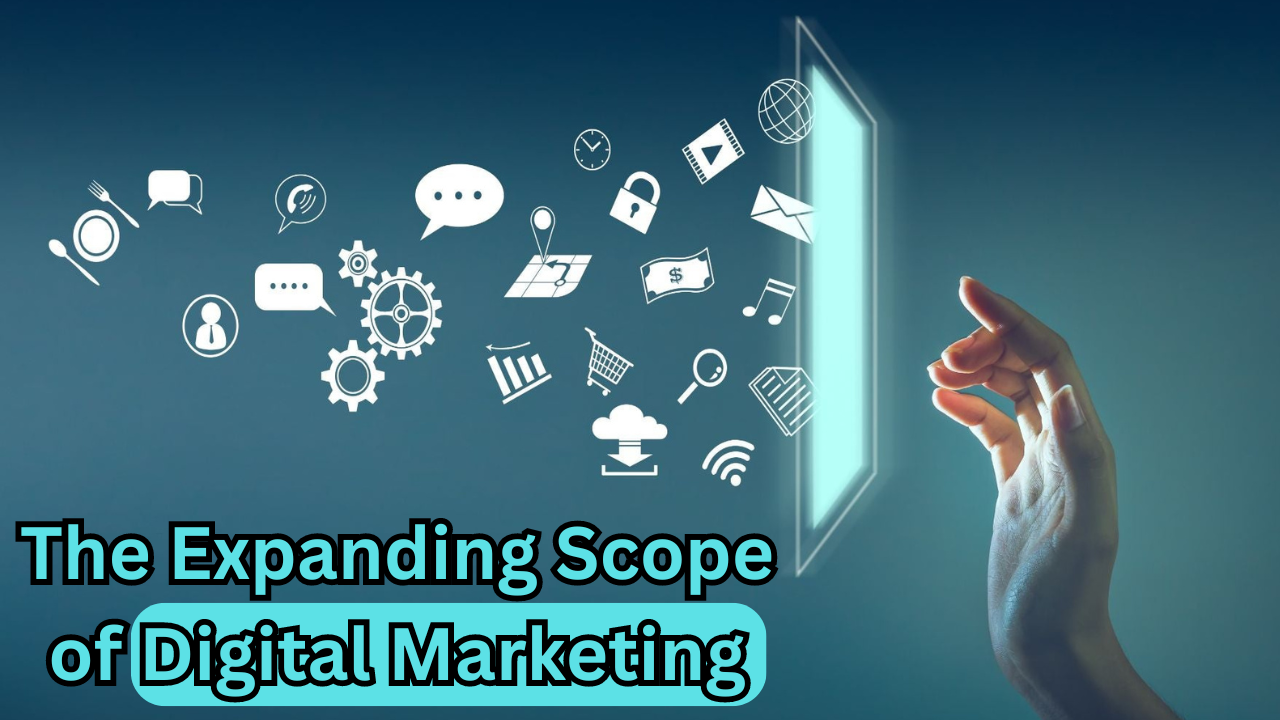
After the Internet is available for Public use. Digital marketing has revolutionized the business to reach, engage, and convert their required audiences. With the advancement of new technologies and the ever-increasing penetration of the internet, the scope of digital marketing has expanded far beyond traditional marketing methods. Today, it has a wide range of strategies and channels, each offering unique opportunities to connect with consumers in a personalized and impactful way.
In this article, we’ll explore the various aspects of digital marketing, including its key components, emerging trends, and the future potential it holds for businesses across industries.
The Core Components of Digital Marketing
Search Engine Optimization (SEO):
SEO is the practice of optimizing a website to rank higher in search engine results pages (SERPs). It applied on-page and off-page tactics, such as keyword optimization, content creation, backlink building, and technical SEO. The goal is to increase organic traffic to a website by making it more visible to users searching for relevant topics. As search engines like Google continue to refine their algorithms, SEO remains a fundamental aspect of digital marketing.
Content Marketing:
Content marketing Emphasizes creating and spreading valuable, relevant, and consistent content to attract and engage a target audience. This content can take the form of blog posts, articles, videos, infographics, and more. The purpose of content marketing is not just to promote a product or service but to provide useful information to the user that helps the user to make the right decision and, ultimately drive customer loyalty, trust, and conversions.
Social Media Marketing:
Social media platforms like Facebook, Instagram, Twitter, LinkedIn, and TikTok have become essential channels for digital marketing. The company is running ads on the above app. Social media marketing involves creating and sharing content of products on these platforms to engage with audiences, build brand awareness, and drive traffic to a website. With billions of active users across these platforms, social media offers a vast audience.
Pay-Per-Click (PPC) Advertising:
PPC is an online advertising model where advertisers company pay each time a user clicks on one of their ads. These ads appear on search engines like Google (through Google Ads) and on social media platforms. PPC campaigns can be highly targeted, allowing businesses to reach specific demographics, geographic locations, and even users with particular interests. This form of advertising is particularly effective for generating leads and driving immediate traffic to a website.
Email Marketing:
Email marketing is one of the most cost-effective solutions and direct ways to communicate with customers. By sending personalized and targeted emails, businesses can grow leads, promote products, and keep customers informed about new offers and products. With the rise of automation tools, email marketing has become more sophisticated, enabling businesses to send timely and relevant messages based on user behavior and preferences.
Affiliate Marketing:
Affiliate marketing is based on the performance of advertiser where businesses or companies reward affiliates for driving traffic or sales to their website through the affiliate’s marketing efforts on social media platforms. This method leverages partnerships to extend a brand’s reach and is especially popular in e-commerce, where affiliates can earn commissions by promoting products to their audience.
Emerging Trends in Digital Marketing
Artificial Intelligence (AI) and Machine Learning:
AI is transforming digital marketing by empowering more personalized and efficient interactions with customers. AI-powered tools can analyze vast amounts of data to predict consumer behavior, optimize ads and send them to targeting audiences, and automate customer service through Chabot’s recently introduced. Machine learning algorithms help improve these processes over time, making digital marketing strategies become more effective.
Video Marketing:
Video content continues to dominate the digital landscape. From short-form videos on TikTok and Instagram Reels to longer educational content on YouTube, video marketing offers a dynamic way to engage audiences. With the rise of live streaming and interactive video experiences, brands can connect with consumers in real time, providing a more immersive experience.
Personalization and Customer Experience:
Consumers now expect personalized experiences when interacting with brands online. Using data and AI, businesses can tailor their marketing efforts to individual preferences, delivering relevant content, offers, and recommendations. Personalization not only enhances the customer experience but also boosts engagement and conversion rates.
Augmented Reality (AR) and Virtual Reality (VR):
AR and VR technologies are opening new possibilities for digital marketing, particularly in the retail and entertainment industries. These immersive technologies allow consumers to interact with products in a virtual environment before making a purchase. For example, AR apps enable users to visualize how furniture would look in their home, while VR experiences can transport customers to virtual stores or events.
The Future of Digital Marketing
The scope of digital marketing tends to expand even further as technology continues to evolve. The integration of AI, AR, and blockchain technology will likely create more opportunities for innovation in the way businesses engage with their audiences. Additionally, the growing emphasis on data privacy and the implementation of regulations like GDPR will shape the future of digital marketing, pushing businesses to adopt more transparent and ethical practices.
The rise of 5G technology is also expected to enhance digital marketing by enabling faster and more reliable connections, supporting the growth of mobile marketing, and enabling new forms of immersive content.
Moreover, as consumers become more discerning and value-driven, businesses will need to focus on building authentic relationships with their audiences. This means prioritizing quality content, transparency, and social responsibility in their marketing strategies.
Conclusion:
Digital marketing offers a vast and ever-expanding scope of opportunities for businesses to connect with their audiences in meaningful and impactful ways. As technology advances and consumer behavior evolves, staying ahead of the latest trends and leveraging the right tools will be crucial for success. Whether through SEO, content marketing, social media, or emerging technologies, the potential for growth and innovation in digital marketing is limitless, making it an essential component of any modern business strategy.